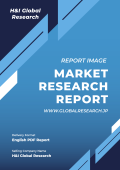1 Feed Mills Market Overview
1.1 Product Definition
1.2 Feed Mills Segment by Type
1.2.1 Global Feed Mills Market Value Growth Rate Analysis by Type 2022 VS 2029
1.2.2 Harmmer Mills
1.2.3 Roller Mills
1.2.4 Pellet Mills
1.2.5 Flaking Mills
1.2.6 Others
1.3 Feed Mills Segment by Application
1.3.1 Global Feed Mills Market Value Growth Rate Analysis by Application: 2022 VS 2029
1.3.2 Animal Feed
1.3.3 Aqua Feed
1.3.4 Pet Feed
1.4 Global Market Growth Prospects
1.4.1 Global Feed Mills Production Value Estimates and Forecasts (2018-2029)
1.4.2 Global Feed Mills Production Capacity Estimates and Forecasts (2018-2029)
1.4.3 Global Feed Mills Production Estimates and Forecasts (2018-2029)
1.4.4 Global Feed Mills Market Average Price Estimates and Forecasts (2018-2029)
1.5 Assumptions and Limitations
2 Market Competition by Manufacturers
2.1 Global Feed Mills Production Market Share by Manufacturers (2018-2023)
2.2 Global Feed Mills Production Value Market Share by Manufacturers (2018-2023)
2.3 Global Key Players of Feed Mills, Industry Ranking, 2021 VS 2022 VS 2023
2.4 Global Feed Mills Market Share by Company Type (Tier 1, Tier 2 and Tier 3)
2.5 Global Feed Mills Average Price by Manufacturers (2018-2023)
2.6 Global Key Manufacturers of Feed Mills, Manufacturing Base Distribution and Headquarters
2.7 Global Key Manufacturers of Feed Mills, Product Offered and Application
2.8 Global Key Manufacturers of Feed Mills, Date of Enter into This Industry
2.9 Feed Mills Market Competitive Situation and Trends
2.9.1 Feed Mills Market Concentration Rate
2.9.2 Global 5 and 10 Largest Feed Mills Players Market Share by Revenue
2.10 Mergers & Acquisitions, Expansion
3 Feed Mills Production by Region
3.1 Global Feed Mills Production Value Estimates and Forecasts by Region: 2018 VS 2022 VS 2029
3.2 Global Feed Mills Production Value by Region (2018-2029)
3.2.1 Global Feed Mills Production Value Market Share by Region (2018-2023)
3.2.2 Global Forecasted Production Value of Feed Mills by Region (2024-2029)
3.3 Global Feed Mills Production Estimates and Forecasts by Region: 2018 VS 2022 VS 2029
3.4 Global Feed Mills Production by Region (2018-2029)
3.4.1 Global Feed Mills Production Market Share by Region (2018-2023)
3.4.2 Global Forecasted Production of Feed Mills by Region (2024-2029)
3.5 Global Feed Mills Market Price Analysis by Region (2018-2023)
3.6 Global Feed Mills Production and Value, Year-over-Year Growth
3.6.1 North America Feed Mills Production Value Estimates and Forecasts (2018-2029)
3.6.2 Europe Feed Mills Production Value Estimates and Forecasts (2018-2029)
3.6.3 China Feed Mills Production Value Estimates and Forecasts (2018-2029)
4 Feed Mills Consumption by Region
4.1 Global Feed Mills Consumption Estimates and Forecasts by Region: 2018 VS 2022 VS 2029
4.2 Global Feed Mills Consumption by Region (2018-2029)
4.2.1 Global Feed Mills Consumption by Region (2018-2023)
4.2.2 Global Feed Mills Forecasted Consumption by Region (2024-2029)
4.3 North America
4.3.1 North America Feed Mills Consumption Growth Rate by Country: 2018 VS 2022 VS 2029
4.3.2 North America Feed Mills Consumption by Country (2018-2029)
4.3.3 United States
4.3.4 Canada
4.4 Europe
4.4.1 Europe Feed Mills Consumption Growth Rate by Country: 2018 VS 2022 VS 2029
4.4.2 Europe Feed Mills Consumption by Country (2018-2029)
4.4.3 Germany
4.4.4 France
4.4.5 U.K.
4.4.6 Italy
4.4.7 Russia
4.5 Asia Pacific
4.5.1 Asia Pacific Feed Mills Consumption Growth Rate by Region: 2018 VS 2022 VS 2029
4.5.2 Asia Pacific Feed Mills Consumption by Region (2018-2029)
4.5.3 China
4.5.4 Japan
4.5.5 South Korea
4.5.6 China Taiwan
4.5.7 Southeast Asia
4.5.8 India
4.6 Latin America, Middle East & Africa
4.6.1 Latin America, Middle East & Africa Feed Mills Consumption Growth Rate by Country: 2018 VS 2022 VS 2029
4.6.2 Latin America, Middle East & Africa Feed Mills Consumption by Country (2018-2029)
4.6.3 Mexico
4.6.4 Brazil
4.6.5 Turkey
5 Segment by Type
5.1 Global Feed Mills Production by Type (2018-2029)
5.1.1 Global Feed Mills Production by Type (2018-2023)
5.1.2 Global Feed Mills Production by Type (2024-2029)
5.1.3 Global Feed Mills Production Market Share by Type (2018-2029)
5.2 Global Feed Mills Production Value by Type (2018-2029)
5.2.1 Global Feed Mills Production Value by Type (2018-2023)
5.2.2 Global Feed Mills Production Value by Type (2024-2029)
5.2.3 Global Feed Mills Production Value Market Share by Type (2018-2029)
5.3 Global Feed Mills Price by Type (2018-2029)
6 Segment by Application
6.1 Global Feed Mills Production by Application (2018-2029)
6.1.1 Global Feed Mills Production by Application (2018-2023)
6.1.2 Global Feed Mills Production by Application (2024-2029)
6.1.3 Global Feed Mills Production Market Share by Application (2018-2029)
6.2 Global Feed Mills Production Value by Application (2018-2029)
6.2.1 Global Feed Mills Production Value by Application (2018-2023)
6.2.2 Global Feed Mills Production Value by Application (2024-2029)
6.2.3 Global Feed Mills Production Value Market Share by Application (2018-2029)
6.3 Global Feed Mills Price by Application (2018-2029)
7 Key Companies Profiled
7.1 Bühler
7.1.1 Bühler Feed Mills Corporation Information
7.1.2 Bühler Feed Mills Product Portfolio
7.1.3 Bühler Feed Mills Production, Value, Price and Gross Margin (2018-2023)
7.1.4 Bühler Main Business and Markets Served
7.1.5 Bühler Recent Developments/Updates
7.2 CPM
7.2.1 CPM Feed Mills Corporation Information
7.2.2 CPM Feed Mills Product Portfolio
7.2.3 CPM Feed Mills Production, Value, Price and Gross Margin (2018-2023)
7.2.4 CPM Main Business and Markets Served
7.2.5 CPM Recent Developments/Updates
7.3 ANDRITZ Group
7.3.1 ANDRITZ Group Feed Mills Corporation Information
7.3.2 ANDRITZ Group Feed Mills Product Portfolio
7.3.3 ANDRITZ Group Feed Mills Production, Value, Price and Gross Margin (2018-2023)
7.3.4 ANDRITZ Group Main Business and Markets Served
7.3.5 ANDRITZ Group Recent Developments/Updates
7.4 Clextral
7.4.1 Clextral Feed Mills Corporation Information
7.4.2 Clextral Feed Mills Product Portfolio
7.4.3 Clextral Feed Mills Production, Value, Price and Gross Margin (2018-2023)
7.4.4 Clextral Main Business and Markets Served
7.4.5 Clextral Recent Developments/Updates
7.5 Alvan Blanch
7.5.1 Alvan Blanch Feed Mills Corporation Information
7.5.2 Alvan Blanch Feed Mills Product Portfolio
7.5.3 Alvan Blanch Feed Mills Production, Value, Price and Gross Margin (2018-2023)
7.5.4 Alvan Blanch Main Business and Markets Served
7.5.5 Alvan Blanch Recent Developments/Updates
7.6 Van Aarsen International
7.6.1 Van Aarsen International Feed Mills Corporation Information
7.6.2 Van Aarsen International Feed Mills Product Portfolio
7.6.3 Van Aarsen International Feed Mills Production, Value, Price and Gross Margin (2018-2023)
7.6.4 Van Aarsen International Main Business and Markets Served
7.6.5 Van Aarsen International Recent Developments/Updates
7.7 Anderson Feed Technology
7.7.1 Anderson Feed Technology Feed Mills Corporation Information
7.7.2 Anderson Feed Technology Feed Mills Product Portfolio
7.7.3 Anderson Feed Technology Feed Mills Production, Value, Price and Gross Margin (2018-2023)
7.7.4 Anderson Feed Technology Main Business and Markets Served
7.7.5 Anderson Feed Technology Recent Developments/Updates
7.8 Buschhoff
7.8.1 Buschhoff Feed Mills Corporation Information
7.8.2 Buschhoff Feed Mills Product Portfolio
7.8.3 Buschhoff Feed Mills Production, Value, Price and Gross Margin (2018-2023)
7.8.4 Buschhoff Main Business and Markets Served
7.7.5 Buschhoff Recent Developments/Updates
7.9 Fragola S.p.a
7.9.1 Fragola S.p.a Feed Mills Corporation Information
7.9.2 Fragola S.p.a Feed Mills Product Portfolio
7.9.3 Fragola S.p.a Feed Mills Production, Value, Price and Gross Margin (2018-2023)
7.9.4 Fragola S.p.a Main Business and Markets Served
7.9.5 Fragola S.p.a Recent Developments/Updates
7.10 BRATNEY
7.10.1 BRATNEY Feed Mills Corporation Information
7.10.2 BRATNEY Feed Mills Product Portfolio
7.10.3 BRATNEY Feed Mills Production, Value, Price and Gross Margin (2018-2023)
7.10.4 BRATNEY Main Business and Markets Served
7.10.5 BRATNEY Recent Developments/Updates
7.11 SKIOLD
7.11.1 SKIOLD Feed Mills Corporation Information
7.11.2 SKIOLD Feed Mills Product Portfolio
7.11.3 SKIOLD Feed Mills Production, Value, Price and Gross Margin (2018-2023)
7.11.4 SKIOLD Main Business and Markets Served
7.11.5 SKIOLD Recent Developments/Updates
7.12 Alapala
7.12.1 Alapala Feed Mills Corporation Information
7.12.2 Alapala Feed Mills Product Portfolio
7.12.3 Alapala Feed Mills Production, Value, Price and Gross Margin (2018-2023)
7.12.4 Alapala Main Business and Markets Served
7.12.5 Alapala Recent Developments/Updates
7.13 ROmiLL
7.13.1 ROmiLL Feed Mills Corporation Information
7.13.2 ROmiLL Feed Mills Product Portfolio
7.13.3 ROmiLL Feed Mills Production, Value, Price and Gross Margin (2018-2023)
7.13.4 ROmiLL Main Business and Markets Served
7.13.5 ROmiLL Recent Developments/Updates
7.14 Nipere Oy
7.14.1 Nipere Oy Feed Mills Corporation Information
7.14.2 Nipere Oy Feed Mills Product Portfolio
7.14.3 Nipere Oy Feed Mills Production, Value, Price and Gross Margin (2018-2023)
7.14.4 Nipere Oy Main Business and Markets Served
7.14.5 Nipere Oy Recent Developments/Updates
7.15 Amandus Kahl
7.15.1 Amandus Kahl Feed Mills Corporation Information
7.15.2 Amandus Kahl Feed Mills Product Portfolio
7.15.3 Amandus Kahl Feed Mills Production, Value, Price and Gross Margin (2018-2023)
7.15.4 Amandus Kahl Main Business and Markets Served
7.15.5 Amandus Kahl Recent Developments/Updates
7.16 Ottevanger Milling Engineers
7.16.1 Ottevanger Milling Engineers Feed Mills Corporation Information
7.16.2 Ottevanger Milling Engineers Feed Mills Product Portfolio
7.16.3 Ottevanger Milling Engineers Feed Mills Production, Value, Price and Gross Margin (2018-2023)
7.16.4 Ottevanger Milling Engineers Main Business and Markets Served
7.16.5 Ottevanger Milling Engineers Recent Developments/Updates
7.17 Shanghai Zhengchang
7.17.1 Shanghai Zhengchang Feed Mills Corporation Information
7.17.2 Shanghai Zhengchang Feed Mills Product Portfolio
7.17.3 Shanghai Zhengchang Feed Mills Production, Value, Price and Gross Margin (2018-2023)
7.17.4 Shanghai Zhengchang Main Business and Markets Served
7.17.5 Shanghai Zhengchang Recent Developments/Updates
7.18 Henan LOCHAMP
7.18.1 Henan LOCHAMP Feed Mills Corporation Information
7.18.2 Henan LOCHAMP Feed Mills Product Portfolio
7.18.3 Henan LOCHAMP Feed Mills Production, Value, Price and Gross Margin (2018-2023)
7.18.4 Henan LOCHAMP Main Business and Markets Served
7.18.5 Henan LOCHAMP Recent Developments/Updates
8 Industry Chain and Sales Channels Analysis
8.1 Feed Mills Industry Chain Analysis
8.2 Feed Mills Key Raw Materials
8.2.1 Key Raw Materials
8.2.2 Raw Materials Key Suppliers
8.3 Feed Mills Production Mode & Process
8.4 Feed Mills Sales and Marketing
8.4.1 Feed Mills Sales Channels
8.4.2 Feed Mills Distributors
8.5 Feed Mills Customers
9 Feed Mills Market Dynamics
9.1 Feed Mills Industry Trends
9.2 Feed Mills Market Drivers
9.3 Feed Mills Market Challenges
9.4 Feed Mills Market Restraints
10 Research Finding and Conclusion
11 Methodology and Data Source
11.1 Methodology/Research Approach
11.1.1 Research Programs/Design
11.1.2 Market Size Estimation
11.1.3 Market Breakdown and Data Triangulation
11.2 Data Source
11.2.1 Secondary Sources
11.2.2 Primary Sources
11.3 Author List
11.4 Disclaimer
| ※参考情報 飼料製粉機は、農業や畜産業において飼料を製造するための重要な設備です。動物に与える飼料は、健康と成長に直接的な影響を与えるため、その製造プロセスは非常に重要です。ここでは、飼料製粉機の概念について、定義、特徴、種類、用途、関連技術などを詳しく説明します。 まず、飼料製粉機とは、原料となる穀物やその他の飼料成分を粉砕し、混合して飼料とする機械のことを指します。これにより、動物の消化に適した形状とサイズに加工された飼料を提供することができます。飼料製粉機の主な役割は、原材料を均等に粉砕し、最適な粒度で混合することで、動物が必要とする栄養素を効果的に摂取できるようにすることです。 飼料製粉機の特徴としては、まず多様性があります。様々な種類の原料を処理することができるため、穀物、牧草、副産物、添加物などを組み合わせて使用することができます。また、粉砕速度や粒度調整機能が搭載されているため、飼料の特性に合わせた製造が可能です。生産効率を向上させるための自動化機能や、品質管理のためのセンサー技術も導入されており、これにより安定した製品を生産することが可能となっています。 飼料製粉機には、さまざまな種類があります。主なものとしては、ハンマーミル、ロータリーミル、ボールミルなどが挙げられます。ハンマーミルは、回転するハンマーによって原料を粉砕する方式で、比較的大きな加工能力を持っています。一方、ロータリーミルは、その名の通り、円形のローターを用いて原料を粉砕し、より均一な粒度を得ることができます。ボールミルは、球状の研磨材を使用して原料を粉砕する方式で、特に微粉化に優れています。これらの機械は、それぞれ異なる特性を持ち、用途に応じて選択されます。 飼料製粉機の用途は多岐にわたります。主に養鶏、養豚、酪農などにおいて使用され、飼料の製造は必須のプロセスです。また、ペットフードの生産や水産養殖においても使用されることがあります。特に近年では、動物の栄養価を科学的に分析し、最適な飼料を提供することが求められており、飼料製粉技術も進化しています。有機質や必須アミノ酸、ミネラルを含む添加物の利用が進んでおり、これにより飼料が動物の成長や健康に与える影響が向上しています。 関連技術には、素材の前処理、混合技術、品質管理技術が含まれます。原料の前処理技術としては、洗浄、乾燥、選別などがあり、これらを通じて材料の品質を確保します。混合技術も重要で、異なる成分を均一に混ぜ合わせることで、栄養素のバランスを最適化します。品質管理技術には、製造過程におけるモニタリング技術、検査技術があり、これにより完成品の品質を保証します。 近年では、飼料製粉機の効率性や持続可能性が重要視されています。エネルギー消費を削減するための省エネ技術や、廃棄物のリサイクル技術が開発され、環境負荷の低減に貢献しています。また、デジタル技術を活用したスマートファーミングの導入が進み、飼料製造の自動化や最適化が進められています。これにより、生産性の向上だけでなく、コスト削減や品質向上につながっています。 また、飼料製粉機の将来的な展望としては、人工知能や機械学習といった先進技術の導入が考えられます。これにより、データ解析を通じて、飼料の成分比率の最適化や不良品発生の予測が可能となります。さらに、持続可能な飼料製造へのシフトが期待されており、植物由来や昆虫由来のタンパク質を使用した新しい飼料の開発が進められています。 このように、飼料製粉機は動物飼育において極めて重要な役割を果たしており、同時に多様な技術革新が進展している分野でもあります。将来的には、さらに高度な技術を取り入れた飼料製造が期待され、動物の健康や生産性を向上させる鍵となるでしょう。飼料製粉技術の進化は、持続可能な農業と畜産業の実現に向けた重要な一歩となることが期待されています。 |
❖ 免責事項 ❖
http://www.globalresearch.jp/disclaimer












